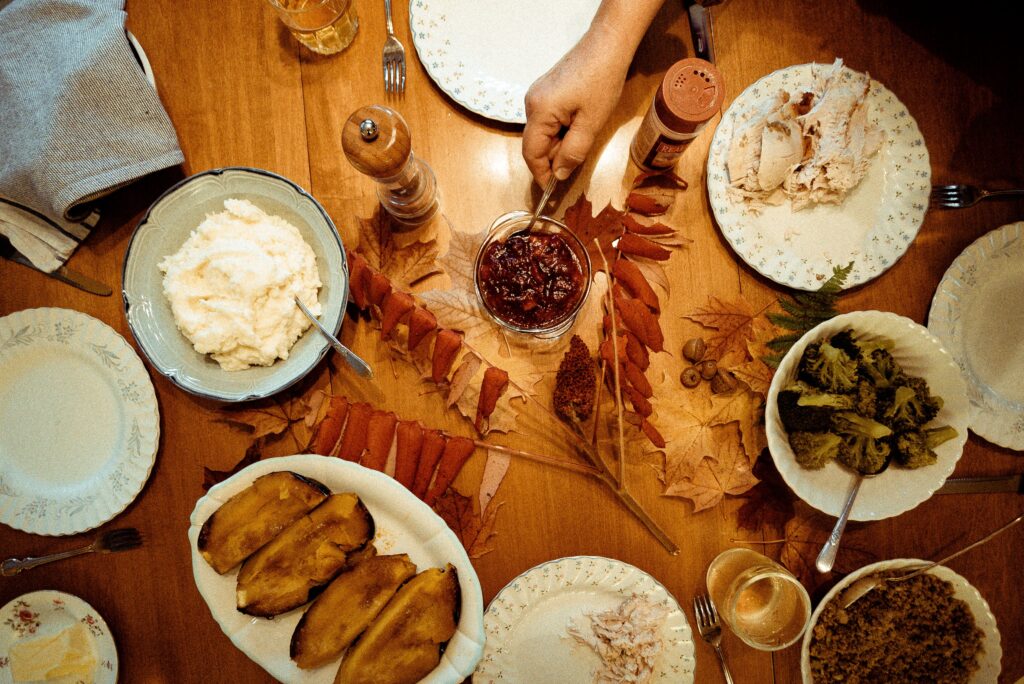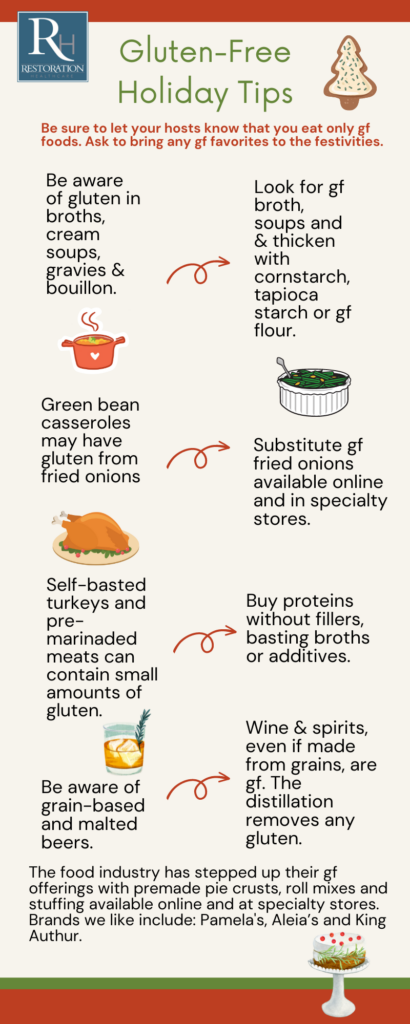Gluten Free Holiday Guide

The holiday season can be challenging for those who follow a gluten-free diet. With so many traditional dishes and treats containing gluten, preparing and planning is essential.
The most common foods containing gluten include traditional stuffing made with bread crumbs or cubes containing gluten. Gravies are often thickened with flour that contains gluten. Additionally, many desserts and baked goods, such as cookies, cakes, and pies, are typically made with wheat flour. It is vital for individuals with gluten sensitivities or celiac disease to be aware of these common holiday foods and to seek out gluten-free alternatives.
Helpful tips to navigate holiday gluten-free eating
1. Communicate. If you’re attending a holiday gathering or dining out, don’t hesitate to reach out to the host or restaurant in advance. Tell them about your dietary restrictions and ask if they can accommodate your needs. Gluten-free limits are very common. Many people understand and are willing to make accommodations, so don’t hesitate to ask.
2. Contribute. Let your host know you will bring a favorite gluten-free holiday dish, appetizer, or snack. You’ll have a food you feel confident eating, and it may help inform others that gluten-free eating is tasty.
3. Cross-contamination. Even if a dish is labeled gluten-free, it’s important to ensure it hasn’t come into contact with gluten-containing ingredients or surfaces. Be cautious with preordered food and at potlucks where the host may not know all the ingredients. Avoid shared utensils, cutting boards, and cooking equipment that may have been used for gluten-containing foods.
Lastly, focus on whole, naturally gluten-free foods. Instead of relying on processed gluten-free substitutes, choose fresh fruits, vegetables, lean proteins, and whole grains like quinoa or rice. These foods are naturally gluten-free and packed with nutrients that can help support your overall health during the holiday season.
Hidden Sources of Gluten
- Some food additives, such as modified food starch or malt flavoring, may contain gluten.
- Certain medications, such as over-the-counter pain relievers or prescription drugs, may contain gluten as a filler or binder.
- Many sauces and condiments, such as soy sauce or salad dressings, may contain hidden gluten.
- Processed foods, including packaged snacks, frozen meals, and canned soups, often contain hidden gluten in the form of thickeners or stabilizers.
- Most beers and malt beverages are made from gluten-containing grains.
- Some personal care products, such as lip balm or toothpaste, may contain gluten.
- Some individuals with gluten sensitivity or celiac disease may also react to non-gluten grains with similar proteins to gluten, such as oats or barley. These grains may also be transported with wheat or in wheat containers, increasing cross-contamination risk.
Navigating holiday gluten-free eating can be challenging, but with proper planning and communication, it’s possible. Remember to reach out to hosts or restaurants in advance, be mindful of cross-contamination, and focus on whole, naturally gluten-free foods. If you have any concerns or questions about your gluten-free dining experience, consider contacting Restoration Healthcare for guidance and support. You can contact or call us at (949) 535-2322. You can enjoy a delicious and safe holiday season by following these tips.


